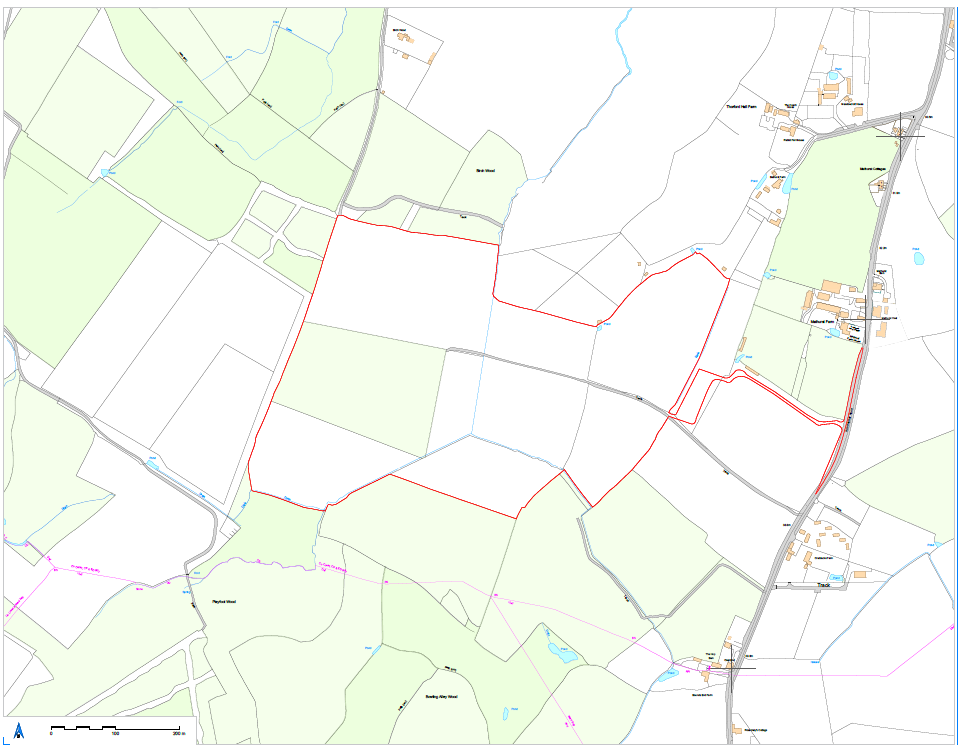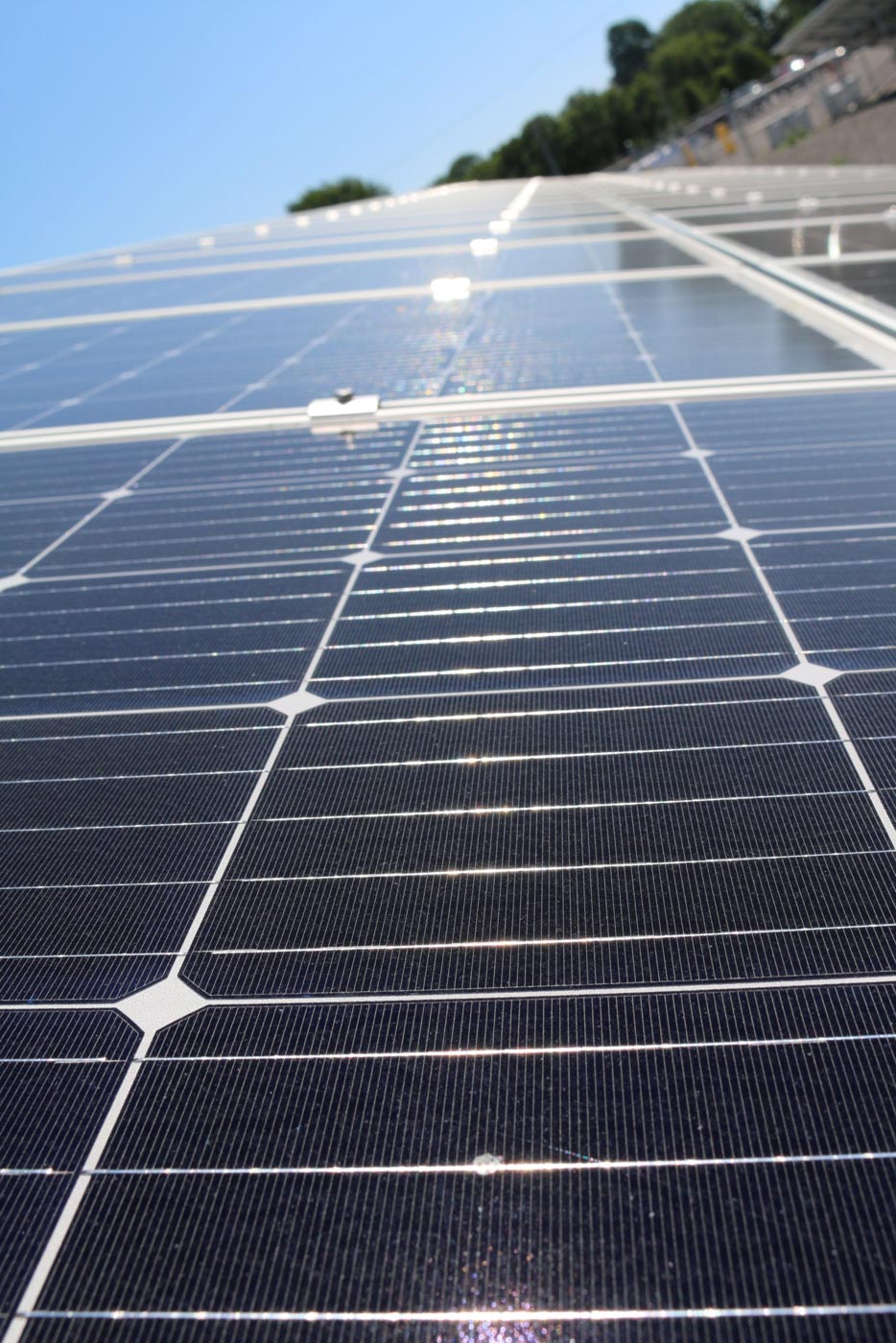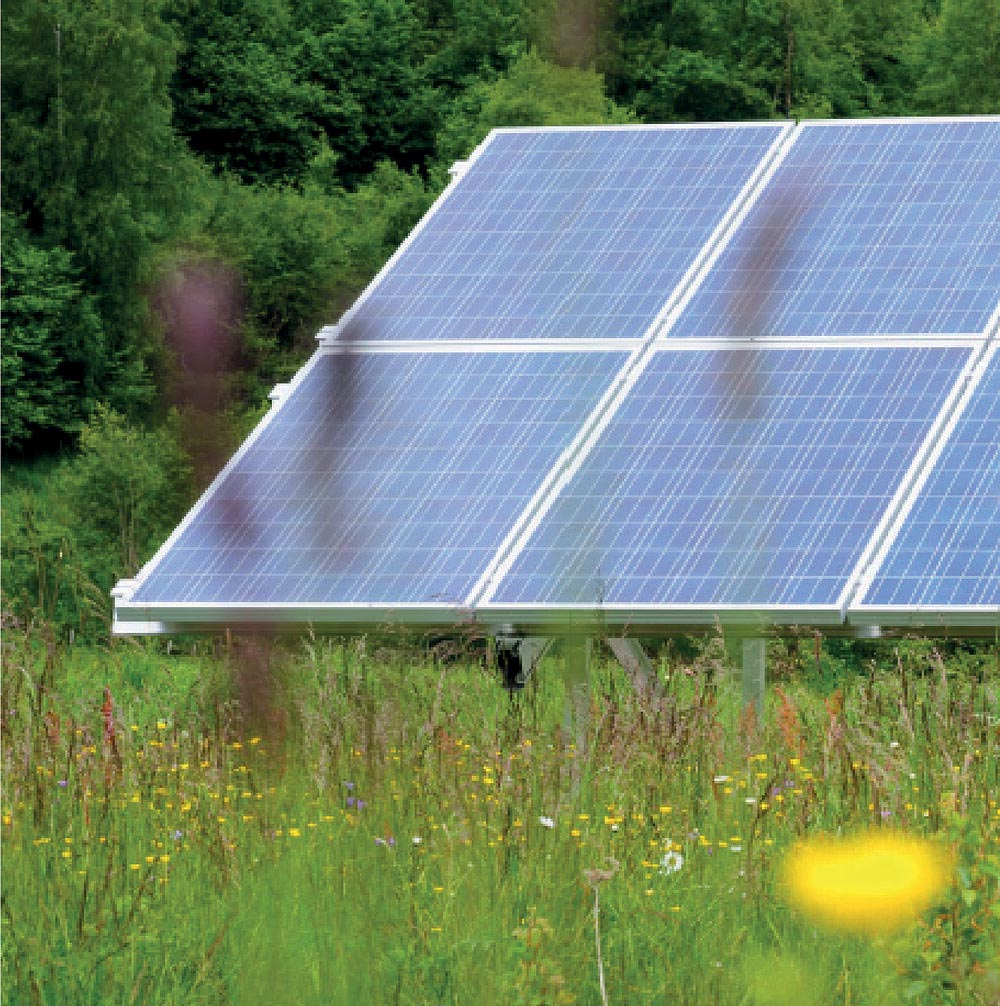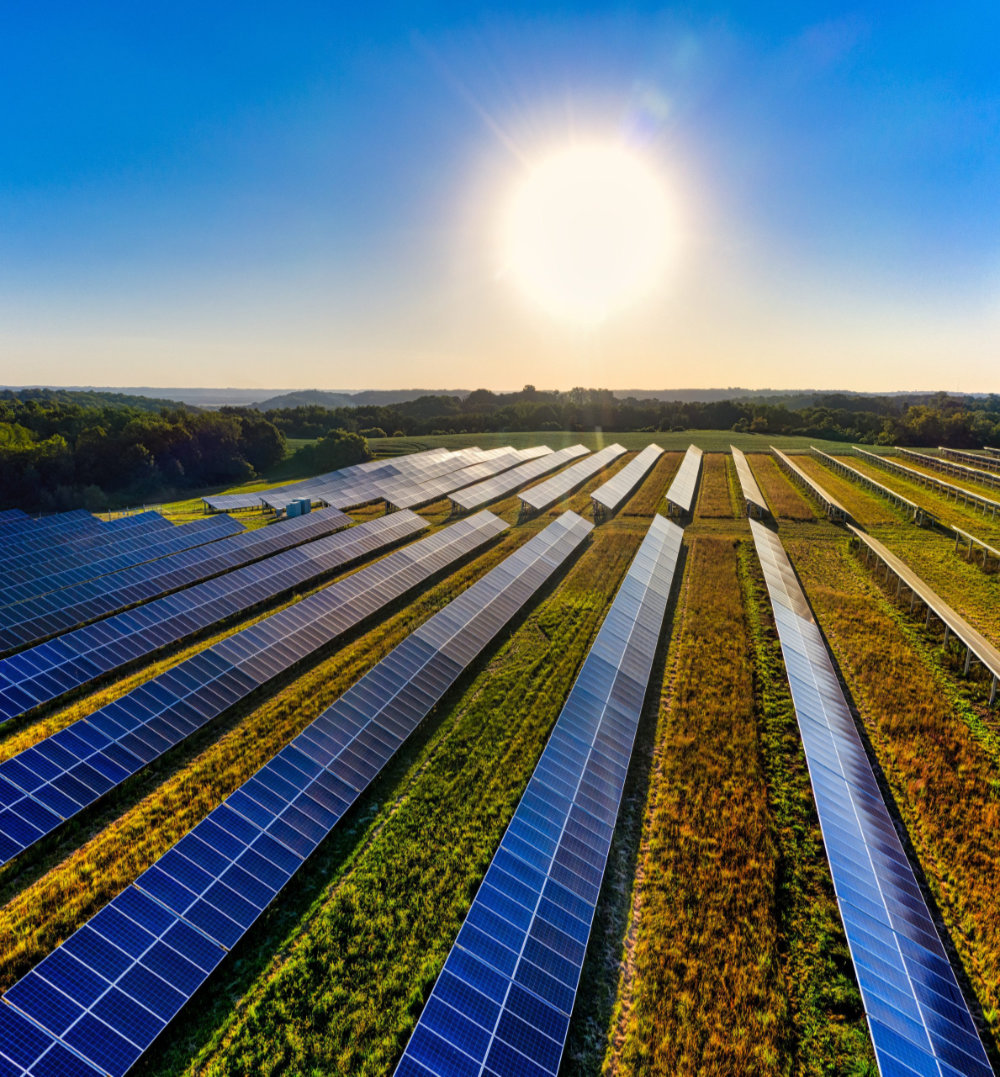Renewable Connections has submitted an application for a solar farm up to 18MW on land to the south of Staplehurst in Kent, to be known as “Mathurst Solar Farm” to Maidstone Borough Council (ref: 24/502235/FULL)
MATHURST
SOLAR FARM
Renewable Connections is investigating the potential for a solar farm up to 18 MW on land to the south of Staplehurst in Kent, known as Mathurst Solar Farm.
Once operational, the project will supply enough power for up to 6,040 homes, and will make a valuable contribution towards tackling the climate emergency in Kent. Maidstone Borough Council, who declared their own climate emergency in 2019, has acknowledged that urgent action is required to limit the environmental impacts caused by climate change. Mathurst Solar Farm will help to support the delivery of urgent national and local climate objectives to generate more renewable energy to support the move away from fossil fuels.
In July and August 2022 we hosted two well attended community information events in the North Hall at the Staplehurst Village Centre. Members of the Renewable Connections team were there to welcome visitors, give information on the proposed development, and receive feedback.
The application has been submitted to Maidstone Borough Council and verified under reference 24/01399/FUL.
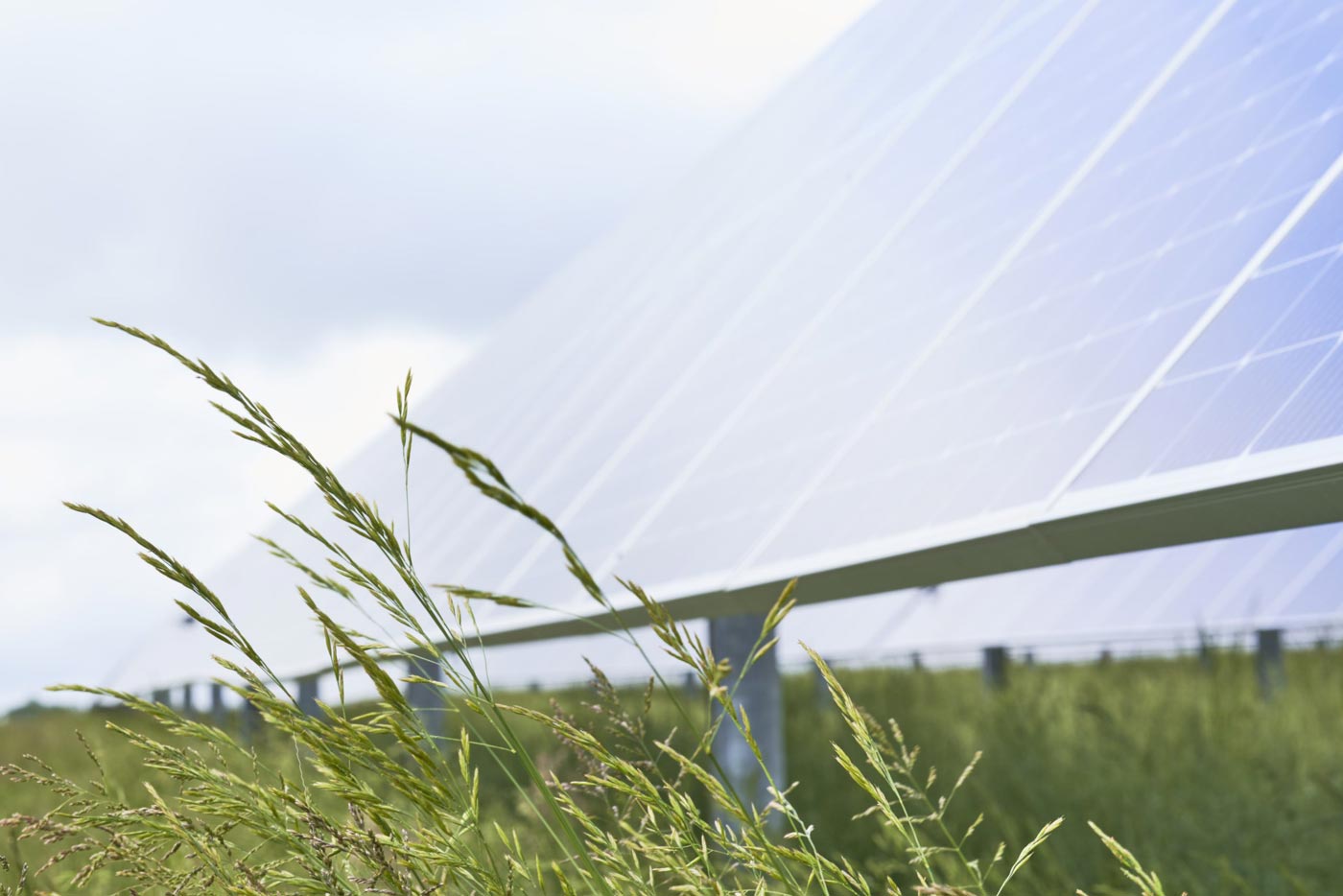
QUICK FACTS
Up to 3203 tonnes
of CO2 saved
Equivalent annual energy needs of up to 6,040 homes
These figures are calculated using the following references. Last updated 22/06/23
-
https://www.gov.uk/government/statistics/subnational-electricity-and-gas-consumption-summary-report-2021
-
https://www.nationalgrideso.com/news/britains-electricity-explained-2022-review
Please note that these figures are representative of the first year of generation only. As new renewable energy projects are built, the electricity grid will de-carbonise and the relative carbon dioxide emissions avoided per year will reduce. This and all of Renewable Connections projects make a positive impact towards the UK’s net-zero targets
LOCATION
The Mathurst Solar Farm site is located 2km to the southwest of Staplehurst and 2km to the east of Curtisden Green, and covers approximately 22 hectares of land. The site itself is currently used for sheep grazing, and will continue to be grazed by sheep during the operational life of the solar farm.
The site is surrounded on all sides by agricultural land, with some pockets of Ancient Woodland located to the north and south. There is a public right of way which crosses part of the site, which will be retained during the solar farm’s construction and operational phases with appropriate buffer zones in place.
Site access for construction and maintenance purposes will utilise the existing road access via Goudhurst Road to the east.
OUR PROPOSALS
Once consented and installed, the solar farm will have a capacity of up to 18 MW and will be operational for up to forty years. After such time, all of the installation will be removed and the land will be restored to its previous condition. The power generated by the solar farm will be exported to the national grid.
The Photovoltaic (PV) solar arrays will have the flexibility to use either a fixed or tracker mounting system. If a fixed mounting system is used, the panels will run in uniform rows from east to west in order to maximise solar gain to the south. If a tracker mounting system is used, the panels will run in uniform rows from north to south in order to allow the panels to tilt on a fixed axis and follow the path of the sun during the day, increasing their efficiency and output. The maximum top height of the panels will be 3m above ground, and the minimum height of the lowest part of the arrays will be 0.5m. If a fixed mounting system is used, the panels will slope 15 degrees from horizontal. If a tracker mounting system is used, the panels will tilt between +15 and -15 degrees from horizontal as they follow the path of the sun.
Bifacial panels will be used to collect light both on the front and the rear sides of the solar panels, as they capture sunlight reflected from the grass surface under the solar framework. Depending on site conditions, bifacial panels can increase the amount of sunlight captured by up to 30% when compared to traditional systems.
Small electric cabins will be located amongst the panels and these will be accessed by a network of crushed stone track which will run through the site. All of the solar panel areas will be surrounded by a deer-proof fencing to protect the equipment from large animals entering the site. CCTV cameras will be located periodically around the site perimeter for security.
The proposed solar farm will also include a package of landscape, ecological, and biodiversity benefits that could include the installation of barn owl boxes, bird nesting boxes, bee hives, log piles, restoration of traditional field boundaries, and other hibernacula such as small buried rubble piles suitable for reptile species, amphibians and insect life. Any existing hedgerows will be bolstered with additional hedgerow and tree planting where required, in addition to potential new mitigation planting around the boundaries of the Site, in order to provide natural screening where appropriate. Land between and beneath the panels can be used for biodiversity enhancements and/or as grazing land for sheep.
The construction of Mathurst Solar Farm is expected to take no more than 24 weeks to complete.
THE NEED FOR THE PROJECT
In June 2019 the Government raised the UK’s ambition on tackling climate change by legislating for a net-zero greenhouse gas emissions target for the whole economy by 2050. Decarbonising the energy sector is integral to achieving this goal and requires major investment in proven technologies, such as solar, which is supported by planning policy at local and national level.
Maidstone Borough Council declared a climate emergency in 2019, acknowledging that urgent action is required to limit the environmental impacts produced by the climate change. Mathurst Solar Farm will help to support the delivery of the Council’s climate objectives, including the generation of more clean, renewable energy and reducing reliance on harmful fossil fuels. Maidstone Borough Council has committed to supporting residents, businesses and communities in the area to generate renewable energy.
Solar is one of the cleanest, lowest cost forms of energy available. Mathurst Solar Farm would make a meaningful contribution to Kent’s energy needs by delivering green energy to up to 6,040 homes for the first year of generation.
FAQ’s
Why this location?
This site was identified following extensive site selection across Kent which took into account environmental designations, local electricity network access and capacity, the physical characteristics of the site, and the need for a supportive landowner.
Will there be any impacts on local roads?
For a period of approximately 24 weeks during construction there will be deliveries of equipment to site. Renewable Connections will put in place measures to manage the potential impacts of construction traffic, and these measures will be detailed in a Construction Traffic Management Plan to be submitted with any future planning application. Once operational there will be infrequent maintenance visits to the site via a car or van, expected to take place no more than once per month.
Will there be any permanent impact?
Solar farms are temporary installations, and the land will be fully reinstated to farmland once the equipment is removed at the end of the project life. There will therefore be no permanent impacts.
Does solar pose a health risk?
No – solar is a passive technology which doesn’t produce any harmful by-products.
How long will the project be there?
The solar farm will be operational for a period of up to 40 years. At the end of its project life, the development will be decommissioned, and the site returned to agricultural use.
Are solar farms noisy?
No – solar farms are not noisy, producing no more than normal background levels of sound similar to wind or distant traffic beyond the site boundary.
What are the benefits to the local community?
Renewable Connections is committed to maximising benefits for the local community including establishing a community benefit fund. As well the environmental benefits of producing low carbon green energy, the project can improve local biodiversity via wildflower meadow planting, hedgerow infilling, as well as other ecological enhancement measures.
GET IN TOUCH
mathurstfarmsolar@renewableconnections.co.uk
Telephone: 0800 254 5011
Mathurst Solar Farm,
LDN:W,
3 Noble Street,
London,
EC2V 7EE
Renewable Connections is committed to respecting your privacy and to complying with UK data protection and privacy laws. Our privacy policy explains how we collect, use, share and protect personal information.
